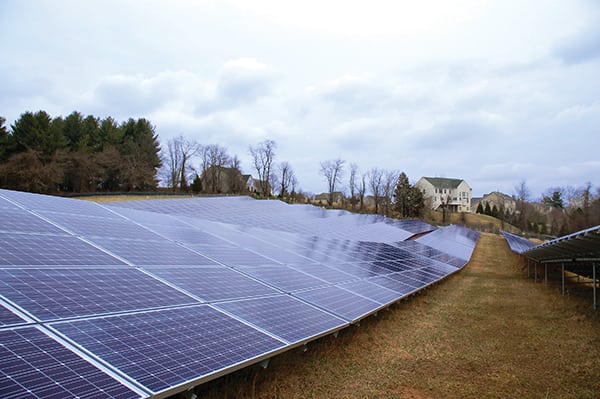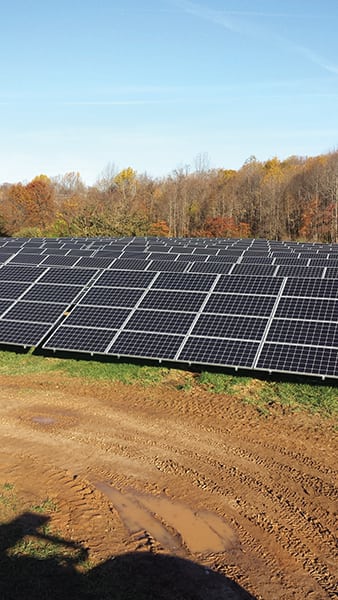The Future of Load Control for Solar PV
Managing the output from multiple solar photovoltaic (PV) systems has become a challenge for grid managers. Though that is often used as an argument against greater solar penetration, several solutions for solar load control are available and growing in flexibility.
Solar power has taken off the training wheels. Once an afterthought, solar photovoltaic (PV) generation has been one of the major sources of new capacity for several years. According to statistics from the Solar Energy Industries Association, through the first half of 2015, 40% of all new generating capacity added in the U.S. was solar PV. Cumulative installed capacity passed 20 GW in the second quarter, with that total expected to pass 22 GW by end-of-year. With prices continuing their downward trajectory across the utility, commercial, and residential sectors, that growth is expected to continue whether or not the federal Investment Tax Credit is renewed.
But all that new capacity has meant new concerns for grid management. Grids that had little trouble absorbing the output from a few small PV systems are being challenged by generation from dozens or even hundreds of systems reaching up to megawatt scale (Figure 1). That has meant a growing need for load control solutions for solar PV systems to allow them to operate efficiently and profitably without causing voltage fluctuations and other problems for the grid.
Multiple Options
So how do you get a lot of intermittent generation on the grid without causing problems? As with many other things in the power sector, the devil is in the details.
C.J. Colavito, director of engineering for Standard Solar, has had a lot of experience connecting medium-to-large commercial PV systems to the grid. As he explained to POWER in an interview at the Solar Power International conference in Anaheim, Calif., in September, a lot depends on where your system is located.
“The proximity to the substation is an important factor for evaluating how the system is going to affect the grid,” he said, “because the closer you are to the substation, the more firm the voltage is from the substation transformer and the less likelihood we’re going to cause voltage fluctuations.”
The issue, Colavito said, is less with ramping up, which can be managed easily, than with ramping down suddenly when a cloud passes over or some other issue causes generation to suddenly drop. Controlling ramp-down so that it doesn’t cause voltage fluctuations is not technically difficult from an engineering standpoint, but it does come with some other challenges.
There are two ways to do ramp-rate control: Either replace the lost generation with storage or other alternate means of generating power, or use predictive analytics to anticipate ramp-down, and reduce your generation in advance so that the drop is not as steep.
The problem with these approaches, Colavito said, is that they “can get complicated and expensive.” Storage is not cost-effective when used purely for ramp-rate control, and predictive modeling is still on the cutting edge, especially when working with short time scales. A better method would be operating your system in a way that voltage fluctuations are intrinsically limited.
It turns out that there is such an approach: operating with a non-unity power factor.
The power factor (PF) of an AC electrical system is the ratio of real power flowing to the load to apparent power in the circuit. At unity, the ratio is 1, and all things being equal, utilities prefer operating at unity because it keeps transmission losses to a minimum. At PFs below 1, more current is needed to perform the same amount of work.
But operating a generating system at non-unity PF has an important benefit for solar PV systems: They absorb reactive power, which keeps a lid on voltage fluctuations.
“That way, as we ramp down in power output, reactive power consumption ramps down proportionately, and at an equal rate as the system ramps down, and that has a dampening effect on voltage fluctuation.”
Smart Inverters
Colavito said it’s becoming common for large commercial solar PV systems to operate at fixed PFs down to 0.95, sometimes as low as 0.9, and Standard Solar has begun taking this into account with its system design (Figure 2). Nearly all smart inverters on the market now are capable of this kind of operation, and string inverters used on larger systems up to 5 MW and 10 MW are adding the capability.
“The manufacturers have done a really good job of integrating a lot of really advanced smart integration features into their inverters, which allows them to be more flexible, and it’s built into the inverters whether you require it or not,” he said. “We’re now at a stage where it’s a function of the utilities getting the ability to access and work with these smart inverters.”
Right now, these systems are capable of a lot more functions than utilities are calling up. Colavito likened the situation to that of a teenager being given a Lamborghini for his first car and leaving it in second gear.
But making non-unity work has some tradeoffs. By definition, this sort of operation has more apparent power than real power. That means the system has to be designed around that parameter.
“If your inverter power is listed in kVA [reactive power], and you’re operating at non-unity so that kW is not equal to kVA,” Colavito said, “then my actual kW is going to be less. So if my inverter set is good for 2 MVA, and I’m running at 0.95, I’m not going to get 2 MW of power output.”
Because of that, solar PV system engineers have to know ahead of time what utilities expect from them.
“If we understand what they want to do in terms of curtailment, power factor, or ramp-rate control at the beginning, it’s not really a problem for us,” he said. “It is a problem when it’s late in the game, we have a plan in place, and now you want to introduce all this, because it will have a financial impact on the project performance. If we plan for it up front, we can build in extra inverter capacity for a pretty small amount.”
That means project planners and utilities have to start working together very early on in the process, he said, both for proper engineering and to educate the utility about what the system is capable of.
As PV panel prices continue to fall, however, Colavito sees another method of PV grid integration on the horizon, one that turns some traditional power generation conventions on their head: Substantially oversizing the system relative to its nameplate capacity.
“I think rather than using energy storage for grid integration, we’re going to be using more really high DC-to-AC ratios, really large amounts of PV input to smaller AC capacities, so that fluctuation is clipped off by the inverter, resulting in more of a trapezoidal output.”
While that means some generation is lost, it results in a much flatter, higher-quality output from the grid standpoint and much less fluctuation, he said. The lost generation in general is often less valuable than the flat generation below the cutoff point. Current systems are designed at about 1.3 to 1.5 DC-to-AC ratios, but Colavito expects that to rise to 1.8 or even 2.0 before much longer. The newest inverters are being designed to handle these higher ratios, he said. As panel costs fall, they become a smaller and smaller component of the overall project costs, making this additional capacity less of a financial issue, especially since most of the soft costs are not affected by higher ratios.
Storage Has a Role
Still, energy storage seems destined to play a role in solar PV load management, but it may not be behind the meter. Daniel Girard, EPC director for S&C Electric Co., said his company is seeing more and more utilities looking at community energy storage—placing storage batteries in neighborhoods to help manage output from distributed PV systems.
Community storage, he explained, can help with volt/VAR control or essentially serve as an uninterruptible power supply (Figure 3). For commercial systems, though he agreed smart inverters are an important development, Girard said they’ve seen clients combine oversizing PV plants with storage to be able to send power out over a longer period.
“We have a client right now, who is being restricted to under 3 MW that they can produce, so they’re going to put in energy storage with their PV so that they can sell power at night and in the morning. They want to build a 6-MW plant even though they can only sell 2.9 MW.”
Girard also suggested that microgrids hold significant future potential for balancing output from solar PV systems, combining storage and backup generation such as microturbines. Rather than relying on the grid to control load, a microgrid uses sophisticated control software to shift generation and load from PV panels, to battery storage, to microturbines, depending on customer needs and the financial structure of the project.
He pointed to Oncor’s System Operating Services Facility (POWER’s 2015 Smart Grid Award winner), which S&C helped design and build, as one example. Though somewhat over-engineered because of its role as a demonstration facility, the Oncor facility demonstrates the potential microgrids have for advanced solar PV load control.
“It’s a very cool project,” Girard said. “A lot of what they put in is more for show, to show people what can be done. But we’re seeing similar projects like this coming up.”
Darren Hammell, chief strategy officer for Princeton Power Systems, pointed out that setting up a microgrid is not terribly challenging with modern inverter technology. A PV system with a connected battery requires very little in the way of upgrades to become a microgrid. “If you can add demand reduction to that, which is really just a software change,” he said, “and tie that together, you have a microgrid now. I think a lot of people are going to start taking those steps.”
— Thomas W. Overton, JD is a POWER associate editor.


